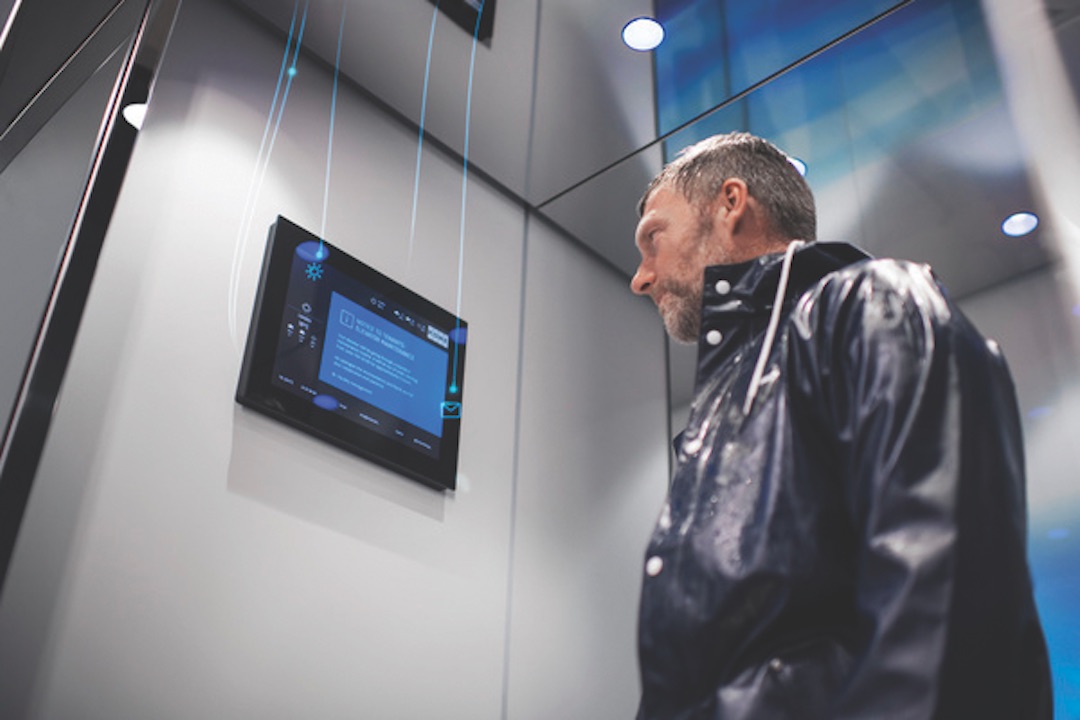KONE Corporation has announced a new elevator technology that could make it possible for supertall buildings to reach greater heights by eliminating several problems of existing elevator technology. The firm's new UltraRope hoisting system uses a rope with a carbon-fiber core and high-friction coating, rather than conventional steel rope. UltraRope is comparatively lightweight, requiring 15% less energy for moving hoisting ropes, compensating ropes, counterweights, elevator cars, and passengers, according to KONE.
In addition, carbon fiber resonates at a different frequency than steel and other typical building materials, a property that is predicted to reduce downtime attributable to building sway. KONE estimates that the product will only have to be replaced half as often as steel rope. The manufacturer claims that the new technology will make it practical for elevators to travel heights of up to 1,000 meters—twice as high as is possible with current technology. (Elevators in the Burj Khalifa, an 828-meter-tall building, will travel a maximum of 504 meters.)
The technology could help facilitate the creation of high-density housing and other urban projects. "This is finally a breakthrough on one of the 'holy grail' limiting factors of tall buildings: that is, the height to which a single elevator could operate before the weight of the steel rope becomes unsupportable over that height," says Antony Wood, Executive Director of the Council for Tall Buildings and Urban Habitat.
(http://download.kone.com/ultrarope/index.htm)
Related Stories
| Mar 14, 2013
Rohit Saxena joins Perkins Eastman as principal
Rohit Saxena AIA, LEED AP has joined Perkins Eastman's Mumbai office as a Principal.
Building Enclosure Systems | Mar 13, 2013
5 novel architectural applications for metal mesh screen systems
From folding façades to colorful LED displays, these fantastical projects show off the architectural possibilities of wire mesh and perforated metal panel technology.
| Mar 12, 2013
NYC reinvents the pay phone
New York's Reinvent Payphones competition attracts entries that transform the concept of public urban communication.
| Mar 12, 2013
'World's greenest' office building seeks tenants in Seattle
Superefficient Seattle office building is designed to meet the ambitious goals of the Living Building Challenge.
| Mar 6, 2013
Dual towers designed by SHoP create new affordable housing in NYC
With the construction of Hunters Point South, New York City will get its first large new housing development for middle-class families in more than 30 years. Related Companies is partnering with the nonprofit Phipps Houses in the project, designed by SHoP Architects with Ismael Leyva Architects.
| Mar 6, 2013
Robert Ivy, Jerry Yudelson announced as keynoters for BUILDINGChicago
Robert Ivy, FAIA, CEO of the American Institute of Architects, will be the keynote speaker at BUILDINGChicago on Tuesday, September 10, 2013. Jerry Yudelson, PE, LEED Fellow, the author of 13 books on sustainable design, will deliver the Wednesday, September 11, keynote address.
| Mar 6, 2013
German demonstration building features algae-powered façade
Exterior of carbon-neutral demonstration building consists of hollow glass panels containing micro-algae "farms."
| Mar 5, 2013
Recycled recreation: Waste-to-energy plant combines with ski resort
A new project near Copenhagen pushes the boundaries of the term "mixed use," combining a waste-to-energy plant with a ski resort.

















